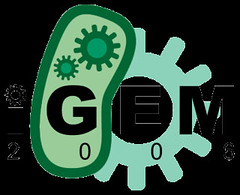 This story reminds me of those days not so long ago when I was teaching molecular biology to a small group of motivated and talented high school sophomores and juniors. Basically, a group of high school biotechnology seniors from Abraham Lincoln High School in San Francisco, California, were invited to participate in the international Genetically Engineered Machine competition (iGEM), hosted at the Massachusetts Institute of Technology. iGEM focuses on the hot new field of synthetic biology: this field genetically manipulates proteins and other molecules that are constructed by living cells into bioengineering parts that are redesigned to make new objects, ranging from new microbes to computer components.
This story reminds me of those days not so long ago when I was teaching molecular biology to a small group of motivated and talented high school sophomores and juniors. Basically, a group of high school biotechnology seniors from Abraham Lincoln High School in San Francisco, California, were invited to participate in the international Genetically Engineered Machine competition (iGEM), hosted at the Massachusetts Institute of Technology. iGEM focuses on the hot new field of synthetic biology: this field genetically manipulates proteins and other molecules that are constructed by living cells into bioengineering parts that are redesigned to make new objects, ranging from new microbes to computer components.
To earn this invitation, the team, consisting of Robert Ovadia, Lauren Jann, Jimmy Huang, Alex Ng and Eric Chou, along with Eric Meltzer (Palo Alto High School) and one college undergraduate, Michael Chen (UC Berkeley), decided to design an artificial organelle inside a cell.
The premise was that, if a new organelle could be created inside a yeast cell, those cells could be "programmed" to produce specific substances such as biofuels or drugs. Even if those compounds were toxic to the yeast, they would not kill the cells because they would be sequestered within the membrane of this new organelle. Obviously, such a development would have important biotechnical applications.
MIT provided all teams with a starter kit of 1,400 DNA pieces called "BioBricks" -- genes that encode various enzymes and other molecules that can do different things inside a cell. But each team had to raise their own funding, and predictably, the funding varied widely between each team.
The team worked on their "synthesome" for ten weeks and made good progress by solving the problem of protecting this alien structure from being destroyed by the cell itself. Even though they were high school students when they did this work, they outscored everyone with the strength of their presentation, including Harvard, MIT, Caltech, Princeton, the University of Cambridge in England, University of Science and Technology in China and more than three dozen other universities.
The next day was the Grand Prize competition, when all the teams repeated their presentations. The team did not win the Grand Prize (Peking University did), but their presence at the iGEM competition serves as an important example.
"Anyone with the want and dedication can do something like this," said Ovadia, who now is a freshman at City College of San Francisco.
Unfortunately, this student neglected to mention something that is even more important than a personal dedication and desire to succeed because, I can easily argue that postdocs have demonstrated ALL those qualities and more throughout their lives, yet those scientists can still end up unemployed: in fact, being the lucky recipient of a tremendous amount of financial, intellectual and emotional support is truly what makes the difference, particularly in science. Without all of these crucial forms of support, even the most dedicated and talented people will fail in science.
Sources
SFGate (quotes).
- Log in to post comments


being the lucky recipient of a tremendous amount of financial, intellectual and emotional support is truly what makes the difference, particularly in science.
That's a very nice and true statement.